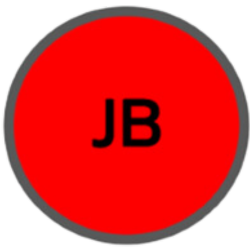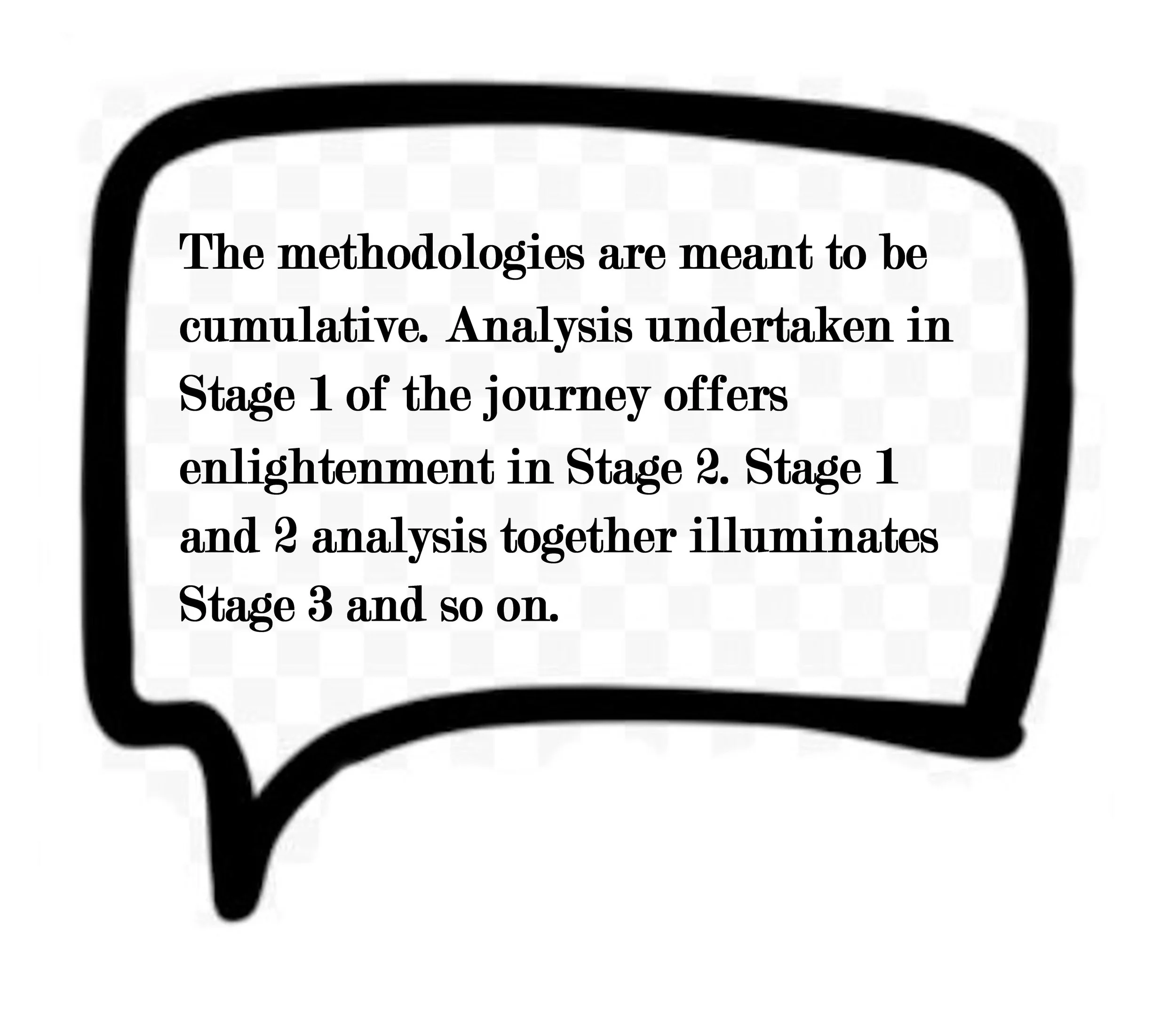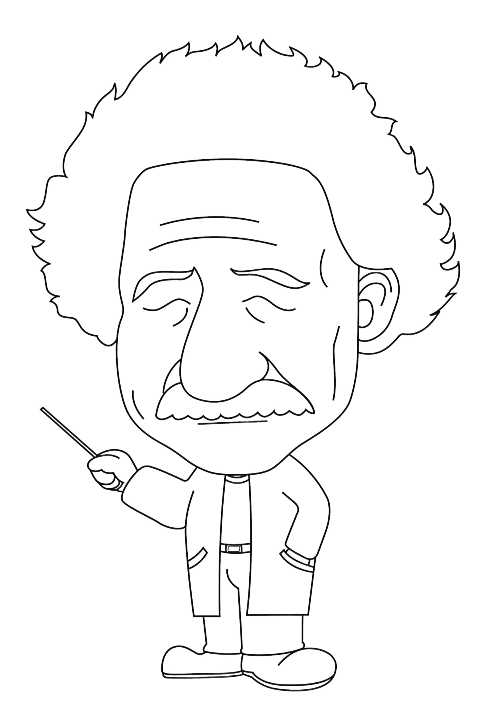Think slow. Execute fast. Enjoy the success.
according2jb.com
Solutions
xxxxxxxxxx
The customer journey and the big decisions you confront.
The IT investment journey a company embarks upon is seldom a linear undertaking, as frequently depicted in most marketing-oriented frameworks. Our conceptualization is designed for managers and employees in the enterprise, not marketers attempting to construct “personas” around the buying audience.
The IT buying journey is a winding road with many twists and turns for a host of reasons: decision rights can change, new business requirements are introduced, a key member of the selection team leaves the organization or business conditions change in such a way that investment priorities must respond to new market realities. This is a more powerful representation of the buying journey than a conceptualization around personas, which have very limited probative value for understanding the challenges the buyer faces.
[Parenthetically, marketers and sales should actually attempt to determine which decision tools are being used in a company’s journey. Possession of this knowledge could have a profound impact on how the vendor approaches the sale.]
As you journey down the rough, winding road from initial technology idea to vendor/product selection and project management planning, understand what tools are available to inject clarity into decision making. Ask the tough questions that should be asked before a dime is spent. A rigorous pre-investment analysis can illuminate overlooked issues, validate vendor sales claims and serve as a strong foundation for project management when time to write the checks.
END OF SECTION
I T C U S T O M E R J O U R N E Y M A P & N E C E S S A R Y D E C I S I O N T O O L S
Scenario
At every stage of the technology buying journey there are decisions. At the core are decisions about the tools and techniques – many known in the management literature – the buying team should deploy to make the most informed, final decisions about the technology investment.
This template represents a global view of the applicable frameworks and tools available at each stage of the buying journey for more effective planning and decision making. Each methodology represents a rigorous excavation of all the issues facing the buying organization. The template is not meant to suggest a hard border between each stage of the journey. Some tools will show up in more than one stage.
For example the Business Model Analyzer could be used in stage 1 of the journey as the organization
figures out what kind of business model impact the new technology will deliver - if any. However the Business Model Analyzer can also be used later in the journey to determine strategic alignment of a product under consideration. If there is no major impact to the company’s business model, does it still want to invest? Same methodology, different contexts.
This is more a general representation of the available frameworks and where these tools are ideally suited for deployment depending upon where the buying team is in their journey.
Leveraging decision making methodologies will not straighten out all the curves in the journey. They will, however, provide a kind of automobile high beams as those turns are negotiated.
END OF SECTION
Stages in the IT customer buying journey
END OF SECTION
D E C I S I O N/P L A N N I N G T O O L S F O R E A C H J O U R N E Y S T A G E
END OF SECTION
1
JOURNEY STAGE
Circumstances
Company is aware of a new technology. It’s possible applicability to its industry sounds interesting and hints at potential performance boosts or cost savings. Here, business and IT gather facts to determine whether a formal value and risk analysis is warranted. This is pre-value assessment with C-suite involvement.
APPLICABLE TOOLS
New Technology Exploratory - a structured approach to launching activities that clarify what the tech is, what it will do, and its potential impact on the company’s business model. As a very early step in the IT customer journey. Is this new tech worth further exploration? Yes or no?
Business Model Analyzer - where is this new tech likely to fit in here? It is helpful to trot this out early in the journey because this is the language of the C-suite and as your journey proceeds more and more rigor will find its way into this methodology.
Cybersecurity Risk Analysis - the earlier the better. Given the priority this holds in most organizations introduce this topic in the methodological analysis early on. Add increasing levels of business and technical detail as needed during the journey.
2
JOURNEY STAGE
Circumstances
A more formal study but not yet a full ROI analysis. Here formal document and intelligence gathering is undertaken using internal criteria to determine info types and sources. Focus is on both business value and technical functionality. This is mainly a decision support function.
APPLICABLE TOOLS
Preliminary Use Case Inventory - begin the tedious task of documenting in a few sentences a few of the more important applicable use cases for the technology, relevant to your organization.
Intelligence Gathering Inventory - start formalizing the inventorying of material supporting a value investigation for investment. Organize by types: popular press, consultant reports, youtube videos etc. This is the basis for collaboration and shared understanding. Document control should be a part of this management. Assign gathering tasks.
Technical Assessment - Important to dig into the techncial side of any new technology. IT dept. needs to get up to speed on the financial and other resource implications of the company wants to move forward.
Preliminary Vendor Identification - a formal ROI analysis is vendor specific. At least identify the vendor population documenting them with criteria or attributes important to your company.
Feasibility Study - less granular than a business case a feasibility study nevertheless is designed to explore the technical and financial viability of an idea.
Governance Designer - construct a governance regime that includes end user input, secret balloting and open, intimidation-free debate on the merits.
Full Use Case Inventory - complete this critical task. Document every single use case of the software in action. Ask the vendor to help.
According2jb.com recommends prioritizinf use cases over features documentation. A collection of use cases is far more probative in understanding technology functionality, the workflows around that functionality and the number of clicks users will engage in to accomplish a task.
Use cases and workflows will also highlight CHANGE. How will the workers that use it everyday undertake their work DIFFERENTLY? Understand this fully. Feature sets offer less illumination.
Business Process/Workflow Mapper- as part of increased understanding of product functionality through use case descriptions now process map these use cases for an inventory of tasks and workflows in the new software. This is the basis of learning the new product.
3
JOURNEY STAGE
Circumstances
The C-suite is sufficiently excited for IT, LOB and operations to undertake a formal ROI analysis. Welcome to the NFL.
APPLICABLE TOOLS
Fully loaded ROI/TCO Analysis - Every risk and cost weighing on the numerator “profit” must be included for an accurate value creation profile. Every “investment” dollar, including internal costs [ie legal] must be included as part of the investment outlay.
END OF SECTION
4
JOURNEY STAGE
5
JOURNEY STAGE
6
JOURNEY STAGE
APPLICABLE TOOLS
APPLICABLE TOOLS
APPLICABLE TOOLS
END OF SECTION
Circumstances
Circumstances
Circumstances
Circumstances
7
JOURNEY STAGE
8
JOURNEY STAGE






